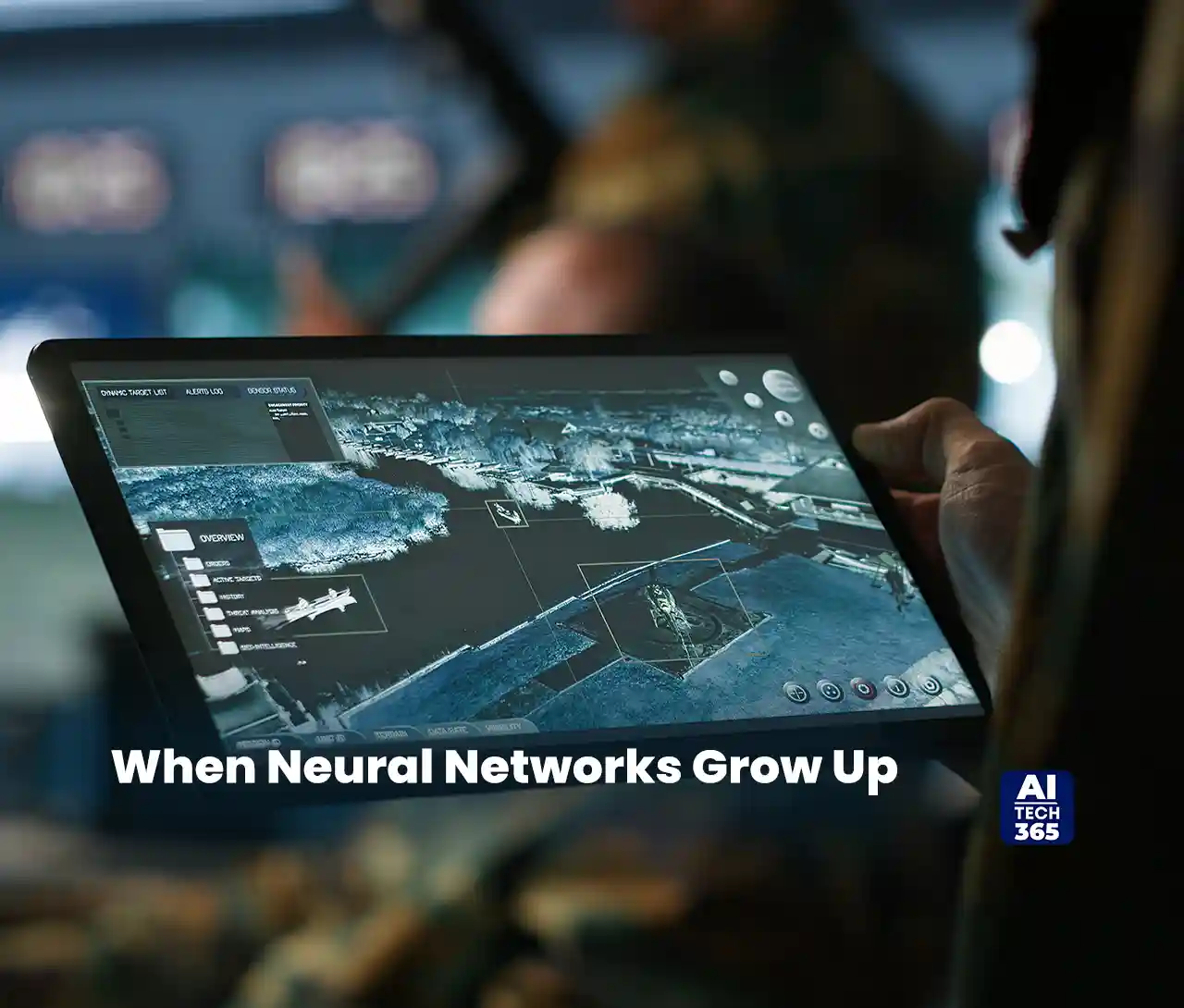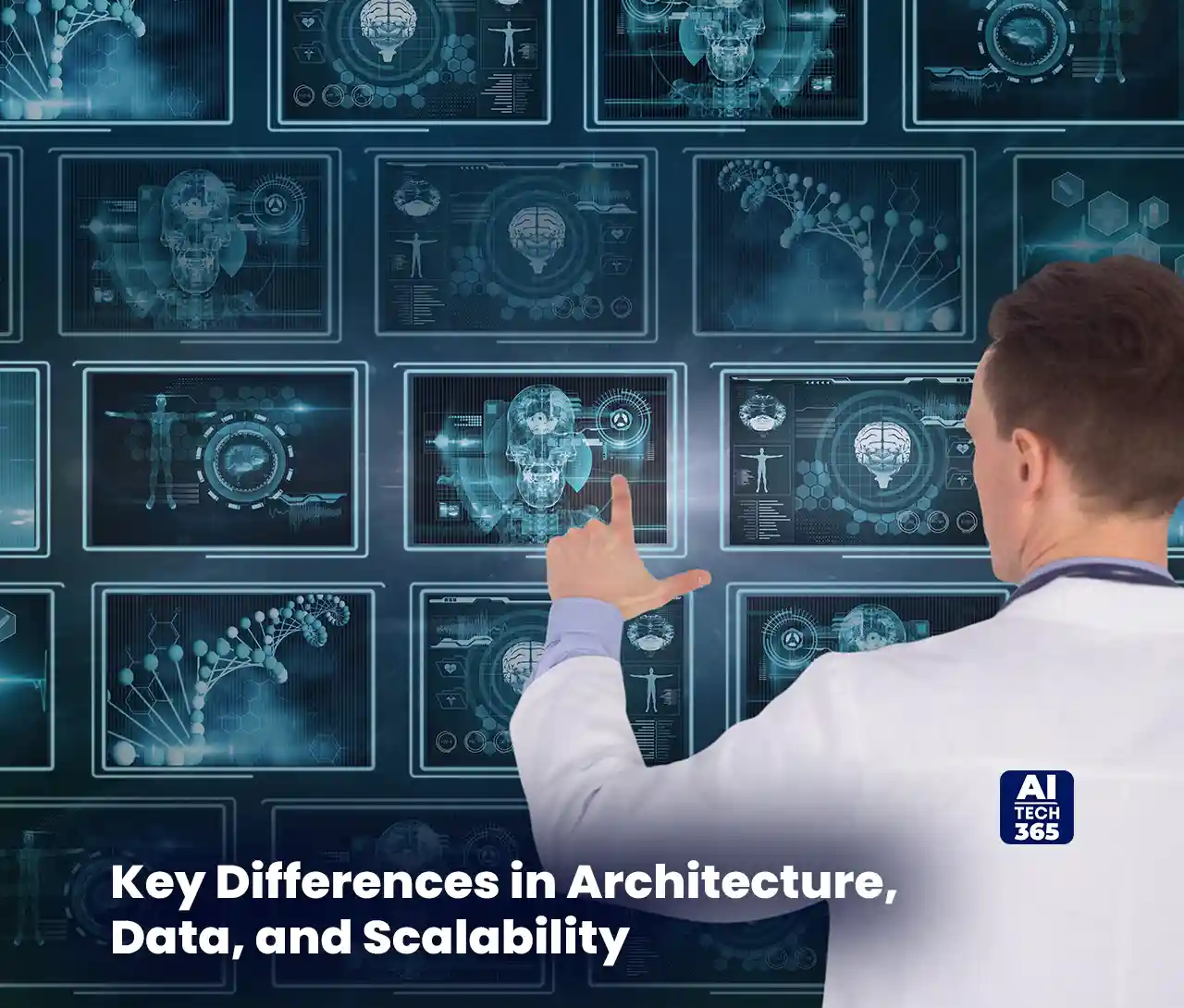In the fast-paced world of AI, two key terms are neural networks and deep learning. These concepts are often mixed up, but they are different layers of AI technology. Each has its own architecture, applications, and implications. Leaders of AI-driven organizations must grasp the differences between them. This understanding is key to strategy, not just theory. Let’s break down these key aspects of modern AI. Let’s clear up myths and truths, so you can make smarter investments.
What Are Neural Networks?
Neural networks are the foundation of many AI systems. They take inspiration from the human brain’s structure. Picture a digital version of linked neurons. Each node handles information and sends signals to other nodes. These networks are great at spotting patterns in data. They are essential for tasks like image classification, fraud detection, and predictive analytics.
A neural network operates through layers; input, hidden, and output. The input layer receives raw data, such as pixel values from an image. Hidden layers change the data through weighted connections. They adjust importance values over time during training. Finally, the output layer delivers predictions or classifications. Traditional neural networks, called ‘shallow,’ usually have one or two hidden layers. This limits their ability to manage very complex data.
Consider the example of email spam filters. Early iterations relied on basic neural networks to analyze keywords and sender reputations. They worked well for simple binary decisions, like spam or not spam. But they struggled with complex phishing attempts and scams that consider context. This limitation highlighted the need for better architectures. So, it began the era of deep learning.
When Neural Networks Grow Up
Deep learning is not a replacement for neural networks but an evolution of them. Imagine neural networks on steroids. They have deeper architectures and can handle unstructured data like never before. The term ‘deep’ refers to many hidden layers. These layers can have dozens or even hundreds. They help extract features in a hierarchical way.
In a deep learning model, each layer refines the data’s representation. In facial recognition systems, the first layers spot edges and textures. Then, the middle layers find shapes like eyes and noses. Finally, the last layers combine these to form a recognizable face. This hierarchical learning works like human thinking. It helps machines tackle problems that need abstract reasoning.
Take autonomous vehicles as a case study. A self-driving car’s AI needs to analyze data from cameras, LiDAR, and radar. It must recognize pedestrians, predict traffic flow, and adjust routes all at once. Shallow neural networks would buckle under this complexity. Deep learning models excel in this area. They use convolutional neural networks (CNNs) for visual data. For time-related sequences, such as sensor inputs, recurrent neural networks (RNNs) are used.
Also Read: The Hidden Risks of Data Lakes: What AI Developers Need to Know About Database Exposure
Key Differences in Architecture, Data, and Scalability
Both technologies take cues from biology. However, they vary in size, application, and resource requirements.
Architectural Depth
Neural networks are the broader category, encompassing all interconnected node-based models. Deep learning specifically describes networks with multiple hidden layers. This depth helps deep learning models automate feature extraction. So, it cuts down on the need for manual engineering. Training a basic network to diagnose medical images needs radiologists to label tumors clearly. A deep learning system can find patterns in raw data. It identifies subtle anomalies that humans can’t see.
Data Hunger and Computational Power
Deep learning is powerful, but it requires a lot of data and computing power. Training a deep learning model usually needs millions of labeled examples. It also requires weeks of GPU-heavy processing. Neural networks with fewer layers can work well with smaller datasets. They require less computing power too. A marketing team checking customer sentiment might use a shallow network for quick insights. Using a deep learning model would be too much; like using a sledgehammer to crack a nut.
Interpretability vs. Performance
Simplicity has its virtues. Shallow neural networks are more transparent. Analysts can see how inputs relate to outputs. Deep learning models, however, function as ‘black boxes.’ Their decision-making processes are opaque, even to engineers. This trade-off creates ethical issues in regulated fields like healthcare and finance. In these areas, explainability is a must.
Real-World Applications
Understanding these differences matters. It helps align technology with business goals.
Neural Networks
Industries with structured data and clear problem definitions benefit from traditional neural networks. Credit scoring is a prime example. Banks use simple networks to check loan applications. They look at income, credit history, and debt-to-income ratios. The data is tabular, the variables are known, and the outcomes are binary (approve/deny). Here, deep learning would introduce unnecessary complexity without improving accuracy.
Deep Learning
When faced with unstructured data, images, audio, text, deep learning reigns supreme. Spotify uses deep learning to analyze millions of songs and playlists. It looks at user behavior, too. This helps create personalized mixes for each listener. NLP tools, like ChatGPT, use transformer-based deep learning. This helps them create text that sounds human. These applications demand models capable of discovering latent patterns in chaotic data landscapes.
Challenges and Strategic Considerations
Tech leaders must consider three key factors when choosing between neural networks and deep learning:
Resource Allocation
Deep learning projects require significant investments in data infrastructure, talent, and hardware. Startups or budget-conscious teams might rely on shallow networks for MVP development. They might save deep learning for later scaling phases.
Ethical and Regulatory Compliance
Industries like healthcare or finance must balance innovation with accountability. Deploying deep learning in diagnostic tools without explainability mechanisms risks regulatory backlash. Neural networks, with their interpretable frameworks, may align better with compliance needs.
Future-Proofing
The AI ecosystem advances rapidly. Deep learning is king today. But new ideas like neuromorphic computing and quantum machine learning may change everything. Leaders must build adaptable teams capable of pivoting as technologies mature.
Convergence and Innovation
Neural networks and deep learning will become less distinct as hybrid architectures appear. Transfer learning helps more people use advanced AI. It involves tweaking pre-trained deep learning models for specific tasks. A retail company could use Google’s Vision AI, a deep learning system. It can recognize product displays specific to each store. This way, they won’t need to train a model from the beginning.
New hardware, like neuromorphic chips, can reduce the resource needs of deep learning. These chips copy how our brains work. They process information faster and use less energy. This is a big deal for edge AI applications.
Clarity in Complexity
For AI leaders, the choice isn’t about picking sides in the neural networks and deep learning debate. It’s about understanding the tools. Neural networks are simple and efficient for clear tasks. Deep learning reveals the potential of unstructured data, but it adds complexity. The key is to match the technology to the problem, not the other way around.
As AI spreads everywhere, people who grasp these differences will outpace competitors. They will drive innovation and navigate ethical challenges. The future is for leaders who look past the hype. They use the right architecture to tackle the right challenges.


